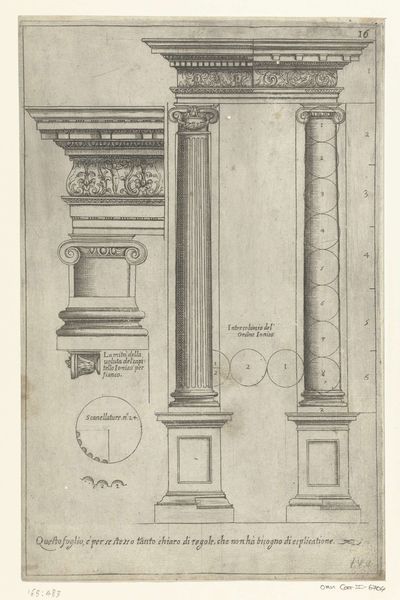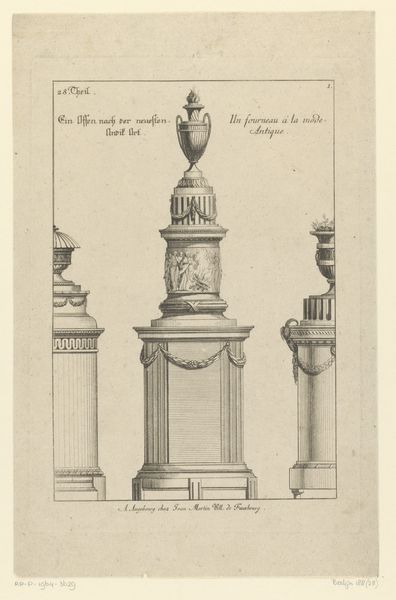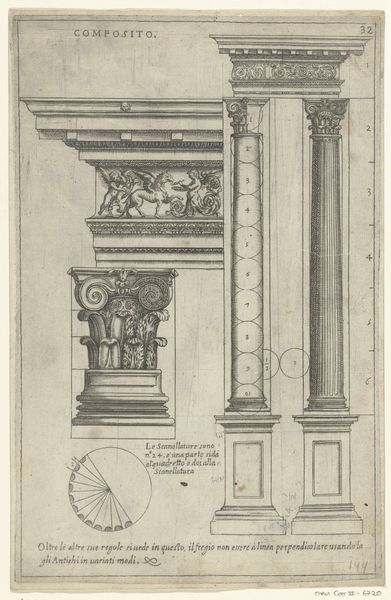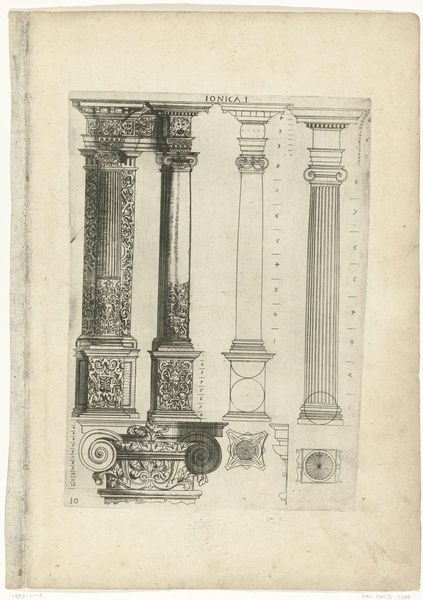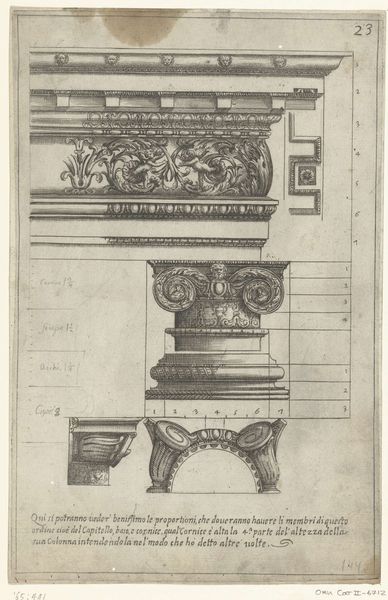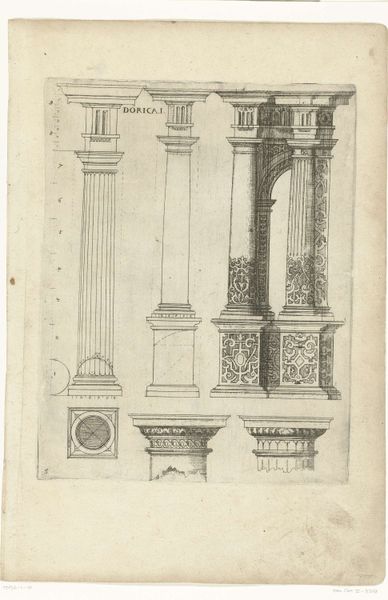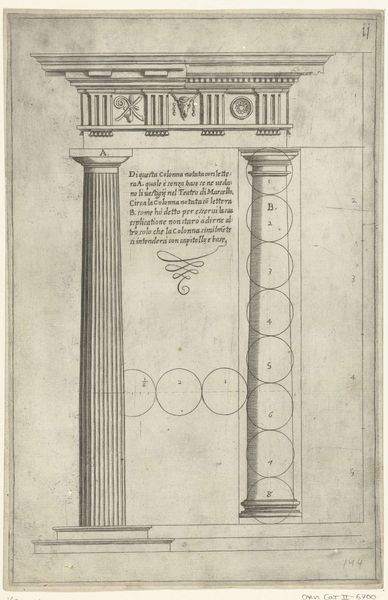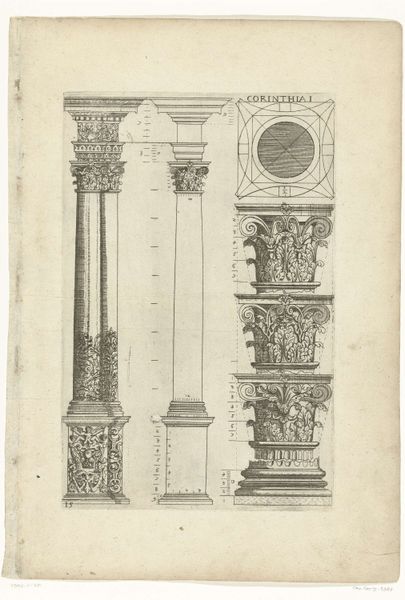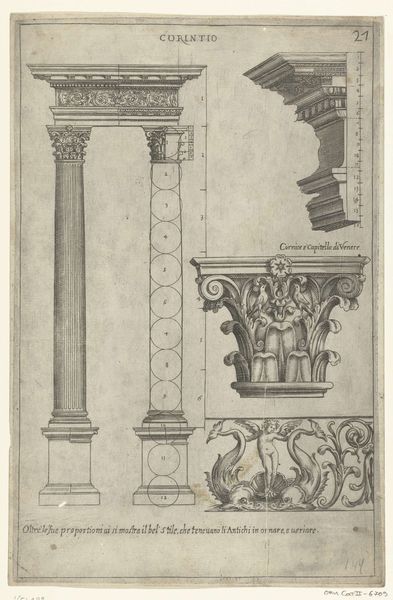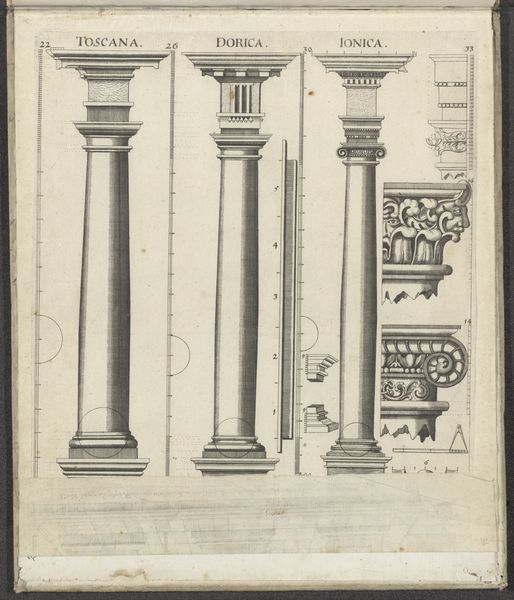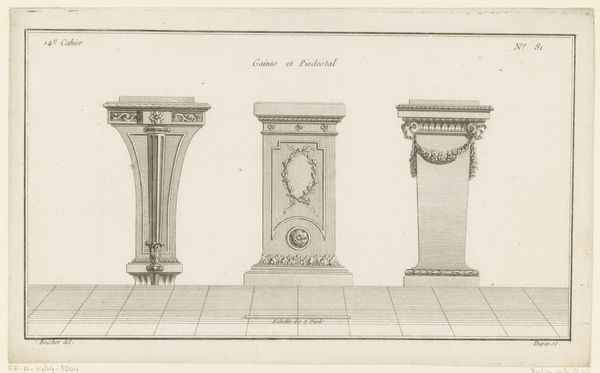
Twee Dorische basementen, zuilen, kapitelen en hoofdgestellen met details 1636
0:00
0:00
drawing, print, engraving, architecture
#
drawing
#
baroque
# print
#
old engraving style
#
geometric
#
engraving
#
architecture
Dimensions: height 277 mm, width 180 mm
Copyright: Rijks Museum: Open Domain
Editor: This engraving from 1636, titled "Two Doric bases, columns, capitals and headgear with details," is by an anonymous artist and resides in the Rijksmuseum. What strikes me is the mathematical precision combined with the artistic details in rendering these architectural elements. How would you approach interpreting this print? Curator: Formally, the engraving presents us with a study in proportions and classical orders. Notice how the artist meticulously employs a grid and numerical notations alongside the drawn columns. It seems almost didactic, doesn’t it? The composition itself reveals a dedication to rational principles. The clean, precise lines are very telling of an academic sensibility. Editor: Yes, it's definitely like a technical drawing, almost divorced from any practical application. Do you think the artist aimed to capture something beyond mere representation? Curator: I suggest the very act of measuring, numbering, and detailing elevates the Doric order. Observe the relationship between line, space, and form and tell me what feelings do the image bring? It strikes me as less evocative of emotion and more aligned with something… instructional. The artist is concerned with accuracy and geometrical clarity, the foundations upon which architectural aesthetics can then proceed. Editor: That makes a lot of sense! I was getting hung up on what it *meant*, but perhaps it's more about the “how”. It almost deconstructs the classical order for the viewer. Curator: Precisely. Focusing on its intrinsic structure rather than external narratives allows for appreciation of architecture's own formal language. And the image makes me wonder, in what ways can such languages, be applied outside the scope of architectural study. Editor: That gives me a completely fresh viewpoint; looking at its structure unlocks more than just the surface level. Curator: I find exploring how the work constitutes itself ultimately allows for an array of interpretations and intellectual pathways that are as valid, if not more, than focusing purely on a cultural context.
Comments
No comments
Be the first to comment and join the conversation on the ultimate creative platform.
